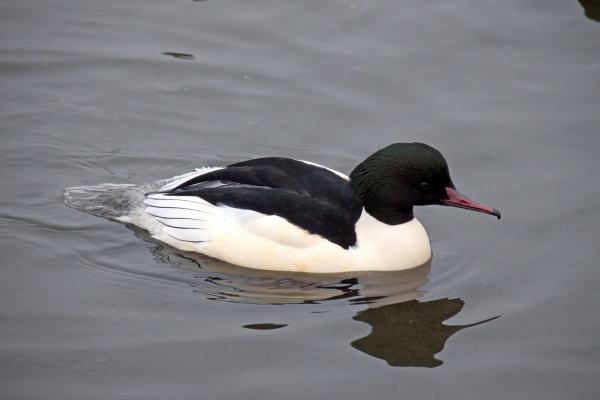Facts About Common merganser
The common merganser, also known as the goosander, is a large seaduck found in rivers and lakes within forested regions across Europe, the northern and central Palearctic, and North America. These birds primarily feed on fish and nest in tree cavities. The species was first described by Carl Linnaeus in 1758. There are three subspecies of common mergansers, though they closely resemble each other.
One fascinating feature of these ducks is their serrated bills, which aid in gripping slippery prey. This distinctive characteristic has earned them the nickname "sawbills." In addition to fish, they consume a variety of other aquatic organisms. Known for their impressive diving abilities, common mergansers are often seen either gliding on the water's surface or resting on rocks. They are partial migrants, meaning some populations move south during winter to avoid frozen waters.
During the breeding season, common mergansers typically nest in tree cavities or specially designed nest boxes. The female usually lays between 6 and 17 eggs per season. The ducklings are cared for by their mother and reach maturity in about two years. While the species is generally not considered threatened, illegal hunting does pose a risk in certain areas.
Recently, there has been a noticeable southward expansion of common mergansers in western Europe, with new populations establishing themselves in previously unoccupied areas. The goosander is protected under the Agreement on the Conservation of African-Eurasian Migratory Waterbirds. In February 2020, a rare sighting of a distressed goosander in Central Park, New York, drew significant attention.

 Hungary
Hungary